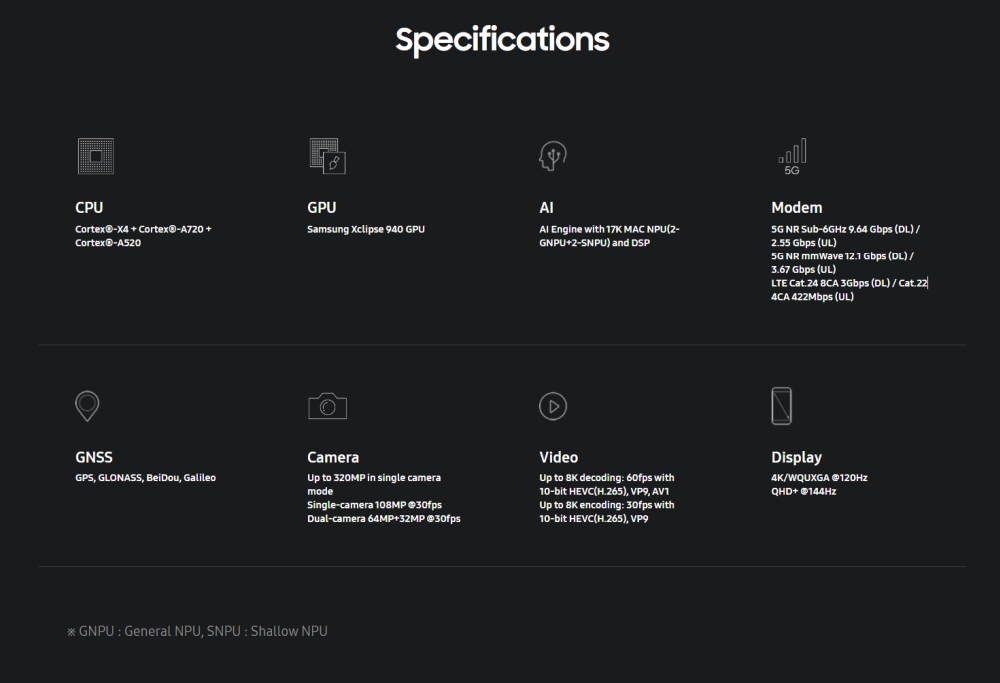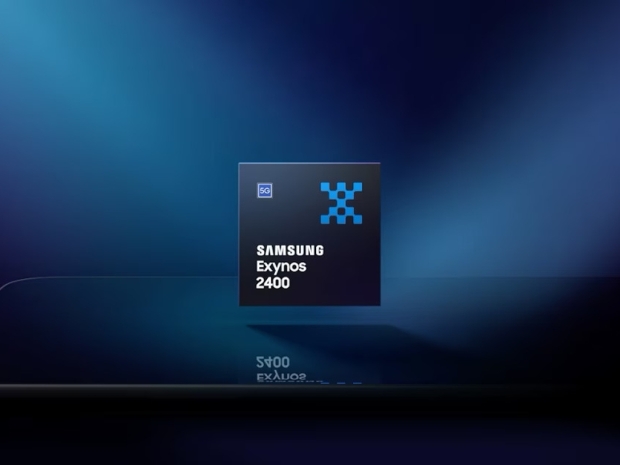The 10-core CPU part in the Exynos 2400 features on Cortex-X4 Prime core clocked at 3.2GHz, two Cortex-A720 cores clocked at 2.9GHz, three additional Cortex-A720 cores clocked at 2.6Hz, and four Cortex-A520 cores clocked at 2.0GHz. Samsung did not reveal a lot of information about the Xclipse 940 GPU, other than it is based on AMD RDNA 3 architecture and should bring hardware ray tracing.
Samsung says that the Exynos 2400 brings a 1.7x increase in CPU performance and a 14.7x boost in AI performance, compared to the Exynos 2200 SoC. The AI engine is a 17K MAC NPU with two GNPUs and two SNPUs. It also supports up to 4K/WQUXGA display at 120Hz or QHD+ at 144Hz, up to 320MP single camera with 8K @ 60fps support with 10-bit HEVC, support for LPDDR5X RAM, and UFS 4.0 storage. The connectivity includes a 5G sub-6GHz modem with 9.64Gbps DL and 2.55Gbps UL, 5G NR mmWave with 12.1Gbps DL and 3.67Gbps UL, as well as GPS, GLONASS, BeiDou and Galileo GPS support.

It is not clear if the Exynos 2400 SoC will end up in any other phones, but so far, the Galaxy S24 and the Galaxy S24+ with Snapdragon 8 Gen 3 are coming to the US, China, and South Korea, while other markets will get the Exynos 2400 SoC. Usually, Snapdragon-equipped Galaxy smartphones had better general and battery performance, so it will be interesting to see if Samsung has managed to level the playing field with the Exynos 2400 SoC.




